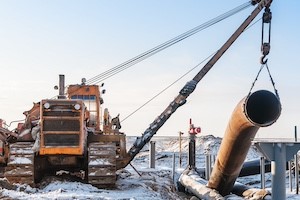Ontario launches feasibility study for east-west pipeline and energy corridor
The Ontario government has awarded a contract to complete a feasibility study to establish a new Canadian east-west pipeline and energy corridor.
 The study will explore the benefits of building new pipelines with Canadian steel to carry Western Canadian oil and gas from Alberta and Saskatchewan to new and established refineries in southern Ontario and new ports on James Bay, Hudson Bay and the Great Lakes.
The study will explore the benefits of building new pipelines with Canadian steel to carry Western Canadian oil and gas from Alberta and Saskatchewan to new and established refineries in southern Ontario and new ports on James Bay, Hudson Bay and the Great Lakes.
The study will be undertaken by an advisory team consisting of GHD Limited, Ernst & Young LLP, Mokwateh, AtkinsRéalis Group Inc., Wood PLC, and Turner & Townsend Limited, along with Infrastructure Ontario, which will act as commercial advisor.
“We’re delivering on our plan to build a more competitive, resilient and self-reliant economy for Ontario and Canada and creating jobs for workers in the face of tariffs from the United States,” said Premier Doug Ford. “This nation-building pipeline and energy corridor will unite our country and help unlock new markets for Canada’s energy resources that will reduce our dependence on the United States, all while creating new jobs and opportunities for Canadian workers from coast to coast to coast.”
A new East-West energy corridor will help to protect Ontario’s energy security by ensuring a reliable and uninterrupted supply of oil and gas for Canadian homes. The pipelines would be built entirely within Canada using Canadian steel.
The feasibility study will be completed next year, delivering corridor and site options and cost analysis. It will also evaluate for complementary development opportunities across Ontario, such as Ring of Fire all-season roads, mineral exports, grid upgrades and a strategic petroleum reserve.
As the project moves forward, the province says it will consult with Indigenous communities.
Ontario, Alberta and Saskatchewan signed a Memorandum of Understanding that commits the provinces to identifying areas of future collaboration that would protect Canadian workers, including new energy and trade infrastructure for critical minerals and natural resources, and to continued cooperation in advancing the development of nuclear energy to meet growing energy needs.








